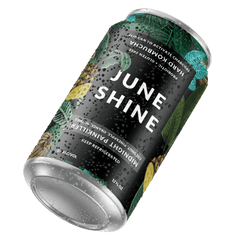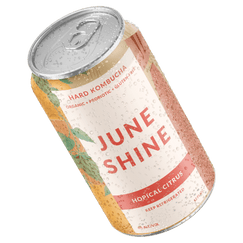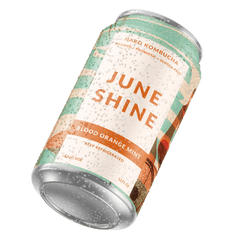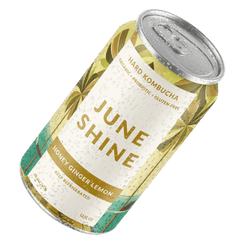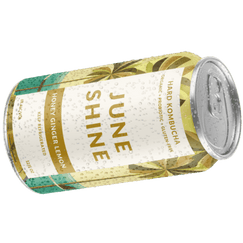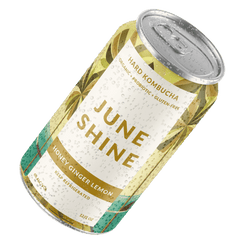Simcoe Hops 101

Attention, hops lovers! Let’s take a moment to appreciate one of the most popular hops on the market—Simcoe hops.
Simcoe hops are an American fan-favorite, and for good reason. Brewers like us love these hops because of their powerful aroma and flavor. Read on to understand hops basics better and see what all the hype is about.
What Are Hops, Anyway?
The word “hops” is thrown around a lot in the drinking world, but it’s okay if you don’t know its exact definition. All hops are different, but they have one thing in common: they come from a green conical flower that grows on a bine (as opposed to a vine). Hops are added to beer to create a specific flavor profile and aid in preservation.
Different hops have unique flavors depending on where they are grown. Hops from America usually add a citrus and pine flavor to a brew, while in European countries, hops are less intense with a floral, earthy flavor.
Beer’s bitterness comes from hops, which provides a nice balance to the sugar in beer.
The Origin Story of Simcoe Hops
Simcoe hops were created in 2000 by Charles E. Zimmerman at Yakima Chief Hops. Because Simcoe hops were patented a year before its release, their exact plant parentage is still a trademarked secret.
We do know that Simcoe hops are grown in Idaho, Washington, and Oregon. Their high growth rate and yield make them easy to harvest—so we have even more to love.
As of 2019, Simcoe hops were the fifth-most produced hops in the USA. Despite being a hometown hero, the brewers in the USA aren’t the only Simcoe hops fans out there. Scotland is a huge importer of Simcoe hops, and the country rates Simcoe as one of its favorites.
Simcoe Hops’ Flavor Profile and Characteristics
Simcoe hops are known for their strong, earthy aroma with hints of pine. They taste fruity with notes of apricot, berry, citrus, and passionfruit. When you think of Simcoe hops, remember these two words: earthy and fruity.
When talking about hops, you can’t forget about alpha and beta acids. Alpha acids are the main source of bitterness in beers. Beta acids don’t add any bitterness, but their levels determine a beer’s aroma and flavors.
In Simcoe hops, there is a 1-to-1 ratio of alpha and beta acids. You can store Simcoe hops at room temperature, and they maintain 70-75% of its alpha acids after six months.
Oils in Simcoe Hops
Finally, Simcoe hops’ oils add to beer’s flavor and aroma when added late or during fermentation. If brewers add oils too early, many of the oils will boil away.
Here are some more fun facts about Simcoe hops’ oils:
- Mercene, on average, constitutes 45% of the hops’ oils. Its flavor is resinous, citrus, and fruity.
- Humulene constitutes around 18% of the oils. It is woody and spicy.
- Caryophyllene constitutes around 11% and has a pepper, woody, herbal flavor.
- Farnesene constitutes less than 1% of the oils found in Simcoe hops. It has a fresh, green, and floral flavor.
- The remaining 15-37% of the oils will be a mixture of pinene, linalool, geraniol, and selinene.
Some Hops Are Better Together
When used alone, Simcoe hops showcase their strong flavor and aroma. However, Simcoe is commonly paired with hops like Cascade, Amarillo, Centennial, and Citra to amplify the effects.
Personally, we’re huge fans of the combination of Simcoe hops with Cascade hops. These two hops balance out the sharper, more piney notes while providing a complexity that’s perfectly at home in our Hopical Citrus Hard Kombucha. The addition of citrus ensures that this light, bright brew quenches your thirst like no other.
What Beer Styles Feature Simcoe Hops?
The best way to understand Simcoe hops is to give them a try. If you’re into beer, you can find Simcoe in a variety of beers, including:
- IPAs
- American Pale Ales
- Wheat Saisons
- Amber Ales
Of course, we understand if you prefer the lightness of a hard kombucha to a calorie-dense beer—after all, that’s what we’re here for.
Hopping Out
All hops are not created equal, and finding the perfect variety of hops is hard to do. It’s important to know what you’re drinking so you can make the most informed choices possible. Plus, it never hurts to have a couple of talking points at your next party.
Grab a cold Junie and let the earthy, fruity nature of Simcoe hops take you away.
Sources:
Simcoe Hops: Substitution, Flavor, Aroma | Beer Maverick
What Is the Difference Between a Bine and a Vine? | Den Garden